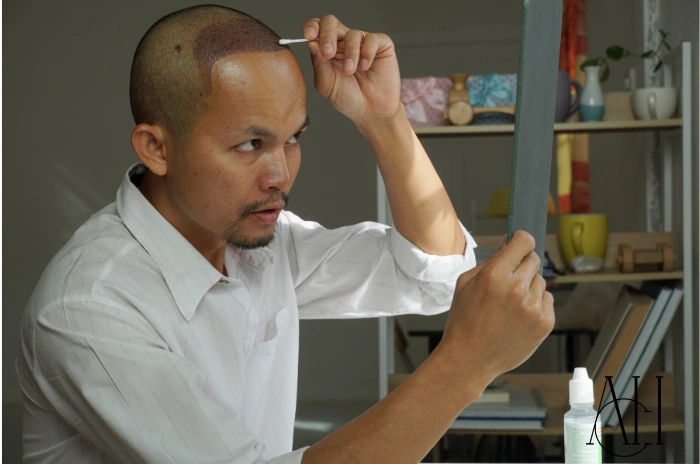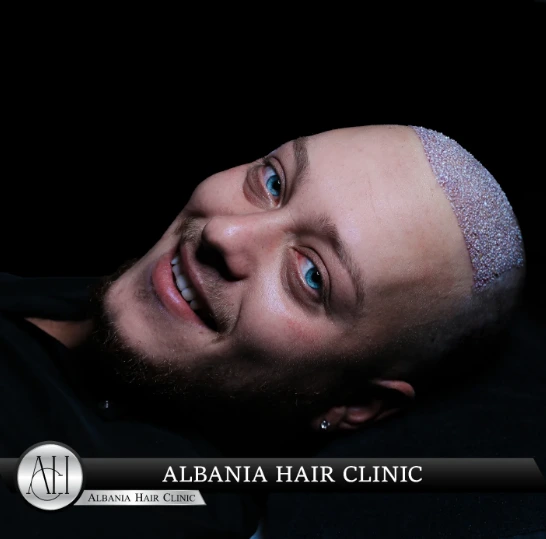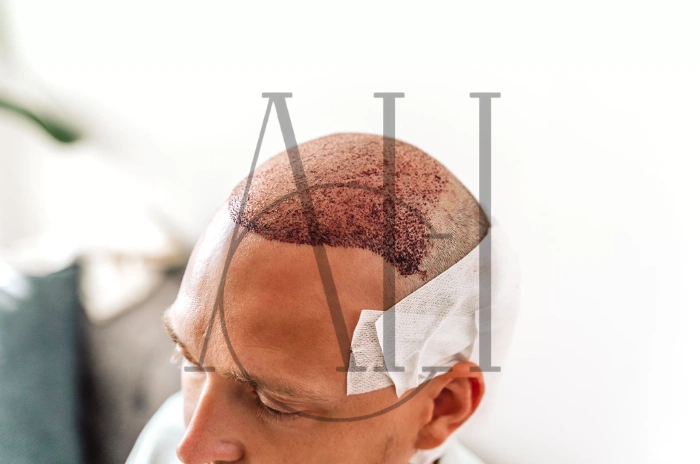Undergoing a hair transplant is a significant step towards restoring not only your hair but also your confidence. However, concerns about scarring can overshadow the excitement of this transformation. Understanding the types of scars that may develop, how to care for them, and methods to minimize their appearance is crucial for achieving the best results. This comprehensive guide will delve into hair transplant scars and provide essential tips for effective scar care.
Table of Contents
ToggleWhat is Hair Transplant Scar Repair?
Hair transplant scar repair refers to the various techniques employed to reduce or conceal scars resulting from hair restoration procedures. These scars typically arise from two primary methods: Follicular Unit Transplantation (FUT) and Follicular Unit Extraction (FUE). The repair process aims to improve the aesthetic appearance of these scars, making them less noticeable and enhancing the overall outcome of the transplant.
Types of Scars Commonly Seen After Hair Transplantation
Understanding the nature of scars associated with hair transplantation is essential for effective management:
Linear Scars
Linear scars are commonly associated with the FUT method, where a strip of scalp is removed to harvest hair follicles. This technique often leaves a horizontal scar on the donor area, typically at the back of the head. The visibility of these scars can vary based on factors such as the surgeon’s skill, the patient’s healing process, and the length of the patient’s hair. While some individuals can conceal these scars with longer hairstyles, others may find them more prominent, especially with shorter haircuts.
Dot-Like Scars
Dot-like scars result from the FUE technique, where individual hair follicles are extracted directly from the scalp. This method leaves multiple tiny, round scars scattered throughout the donor area. These scars are generally less noticeable than linear scars and allow for shorter hairstyles. However, the cumulative effect of numerous extractions can still lead to a mottled appearance if not performed meticulously.
Albania Hair Clinic – Trapianto Capelli in Albania (@albaniahairclinic)’in paylaştığı bir gönderi
Hair Transplant Scar Repair Procedure
Several approaches can be taken to address and improve the appearance of hair transplant scars:
Follicular Unit Extraction (FUE) into Scar Tissue
In some cases, hair follicles can be transplanted directly into the scar tissue to help camouflage the scar. However, the success of this method depends on the thickness and condition of the scar, as scarred skin may not hold grafts as effectively as healthy tissue.
Scalp Micropigmentation (SMP)
SMP involves tattooing tiny pigment deposits into the scalp to mimic the appearance of hair follicles. This technique can effectively conceal both linear and dot-like scars by blending them with the surrounding hair. SMP is a non-invasive option that provides immediate results, though periodic touch-ups may be necessary to maintain the desired appearance.
Laser Therapy
Laser treatments can be utilized to reduce the redness and improve the texture of scar tissue, making scars less noticeable. By promoting collagen remodeling and removing the outer layers of damaged skin, laser therapy can enhance the overall appearance of the scarred area. Multiple sessions may be required to achieve optimal results.
Surgical Revision
In certain situations, surgical excision of the existing scar followed by meticulous closure techniques can create a thinner, less conspicuous scar. This method is typically considered when other non-invasive treatments are ineffective. The feasibility of surgical revision depends on factors such as scar size, location, and the patient’s overall health.
Avoiding a Hair Transplant Scar
Prevention is always preferable to treatment. While it’s challenging to eliminate the risk of scarring entirely, certain measures can significantly reduce its likelihood:
Choosing the Right Surgeon
Selecting a highly skilled and experienced surgeon is paramount. A proficient surgeon employs advanced techniques and precision to minimize tissue trauma and, consequently, scarring. Researching credentials, reviewing before-and-after photos, and reading patient testimonials can aid in making an informed decision.
Opting for FUE Over FUT
If suitable, choosing the FUE method over FUT can result in less noticeable scarring. FUE’s minimally invasive nature leaves tiny dot-like scars that are easier to conceal and heal more rapidly. However, the best technique varies depending on individual circumstances and should be discussed with your surgeon.
Adhering to Post-Operative Care Instructions
Following your surgeon’s post-operative care guidelines is crucial. Proper wound care, avoiding strenuous activities, and protecting the scalp from sun exposure can promote optimal healing and reduce the risk of prominent scarring. Neglecting aftercare instructions can lead to complications that exacerbate scar formation.

Treating Donor Scars with FUE
FUE can also be employed to treat existing donor scars, particularly those resulting from previous FUT procedures:
Camouflaging Linear Scars
By transplanting hair follicles into the linear scar, the area can be concealed as the new hair grows, blending the scar with the surrounding hair. The success of this approach depends on the scar’s characteristics and the availability of donor hair. It’s important to note that while this method can significantly improve the appearance of the scar, complete eradication is unlikely.
Limitations and Considerations
Not all scars are suitable for FUE treatment. Thick or raised scars may not have adequate blood supply to support new grafts. A thorough evaluation by a qualified specialist is necessary to determine the most appropriate treatment plan. Additionally, patients should have realistic expectations regarding the outcomes of scar repair procedures.
Exploring Alternative Treatments
Beyond surgical interventions, several alternative treatments can aid in scar management:
Topical Treatments
Over-the-counter or prescription serums and creams containing silicone can help soften and flatten scar tissue, making scars less noticeable over time. Consistent application as directed is essential for effectiveness. While these treatments may not eliminate scars, they
can complement other methods such as FUE into scars or laser therapy. Look for ingredients like silicone, onion extract, vitamin E, and retinoids, which are commonly used for scar management.
Natural Remedies
While not medically guaranteed, some individuals use natural solutions like aloe vera, coconut oil, or honey to moisturize the area and promote healing. These may help reduce dryness and irritation but should not replace professional treatment, especially for larger or more visible scars.
PRP (Platelet-Rich Plasma)
Platelet-Rich Plasma therapy is gaining traction for its role in improving hair growth and skin healing. Injecting PRP into scar tissue may improve its quality and texture, making it more receptive to grafts if FUE is planned.
Why Is Hair Care Important?
Good hair care following a transplant doesn’t just protect your new grafts—it also contributes to scar minimization:
-
Prevents infections that can worsen scarring.
-
Keeps the scalp hydrated and promotes healthy tissue regeneration.
-
Reduces inflammation, which can lead to keloid or hypertrophic scars.
-
Supports overall healing, making any scars less visible over time.
How Long Should You Avoid Touching Transplanted Hair?
Touching or scratching the transplanted area in the first 10–14 days can dislodge grafts and interfere with healing. This can not only ruin results but also increase the chance of infection or scar formation. You should:
-
Avoid touching unless cleaning.
-
Use prescribed sprays or saline gently.
-
Wear loose clothing when changing to avoid friction.

Is It Safe to Scratch Your Head After a Hair Transplant?
Absolutely not in the early stages. Itching is a natural part of healing, especially when scabs are forming and falling off. Instead of scratching:
-
Use an anti-itch spray provided by your clinic.
-
Keep the scalp moisturized using approved products.
-
Tap gently if necessary, but never scratch.
Scratching can open wounds, delay healing, and increase scar risk significantly.
How to Wash Your Hair After a Hair Transplant?
Hair washing is one of the most delicate parts of your aftercare routine.
First 3–5 Days:
-
No washing or water pressure directly on the scalp.
-
Use a spray bottle of saline solution provided by your clinic.
Day 5–10:
-
Begin gentle washing using a sulfate-free shampoo.
-
Apply with fingertips, not nails.
-
Rinse with lukewarm water, avoiding direct shower streams.
After Day 10:
-
Resume more normal washing methods but continue to avoid rubbing or strong pressure until you’re cleared by your surgeon.
What to Wear After a Hair Transplant?
Your outfit choices can affect both the healing process and scarring:
-
Avoid tight t-shirts or hoodies in the first week that may rub against the head when removed.
-
Choose button-up shirts or zip hoodies to avoid touching the transplant area.
-
Avoid helmets or hard hats for at least 2–3 weeks unless your surgeon clears it.
Hats or caps should only be worn if recommended, and must be loose-fitting and breathable.
What Should You Avoid Eating After a Hair Transplant?
Diet plays a key role in recovery, including how your skin and scalp heal:
❌ Avoid:
-
Sugary snacks – slow healing and increase inflammation.
-
Excess salt and processed food – cause water retention and affect blood flow.
-
Caffeine and alcohol – interfere with sleep and healing.
✅ Eat:
-
Protein-rich foods (chicken, eggs, fish) to promote collagen and keratin production.
-
Leafy greens and fruits – for vitamins A, C, E.
-
Nuts and seeds – rich in omega-3s and zinc.
Supplements may also be advised post-op (Biotin, Iron, Vitamin D, Zinc) to support hair regrowth and tissue repair.
Can You Lose Hair After a Hair Transplant?
Yes, this is normal and expected to some extent. Known as shock loss, this occurs when transplanted or even nearby native hairs shed temporarily due to trauma or disruption to the scalp. It usually begins 2–3 weeks after surgery and resolves over time.
Key Points:
-
It’s temporary – regrowth starts at month 3–4.
-
Hair loss does not mean failure.
-
Consistency with post-op care helps minimize it.

How to Avoid and Treat Hair Transplant Scars?
Prevention is always best, but treatment is available.
To Avoid:
-
Choose FUE over FUT when possible.
-
Follow surgeon instructions closely.
-
Avoid scratching or trauma to healing areas.
-
Use sunscreen or hats (once permitted) to protect from UV rays.
To Treat:
-
FUE into scar
-
Micropigmentation (SMP)
-
Laser therapy
-
Surgical revision
-
Topical scar creams
Each option should be reviewed with your specialist depending on the scar’s severity, your skin type, and your goals.
Can I Wear a Cap, Hat, or Helmet After a Hair Transplant?
Most surgeons recommend:
-
No caps for 7–10 days.
-
After 10 days, you can wear a loose, clean cap (preferably cotton).
-
Avoid tight or fitted caps and helmets for at least 3 weeks.
-
For athletes or workers needing helmets, discuss options during your consultation.
Wearing tight headwear too early can compress grafts, delay healing, and increase scar risk.
Is There a Particular Diet or Food Supplements Recommended After a Hair Transplant?
Yes, nutrition affects both scar healing and hair regrowth.
Suggested Supplements:
-
Biotin – strengthens hair and skin.
-
Zinc & Iron – reduce shedding and speed healing.
-
Omega-3 fatty acids – anti-inflammatory benefits.
-
Vitamin D & B-complex – support new growth.
Speak to your clinic before starting any new supplements.
Can I Expose Myself to the Sun or Swim After My Hair Transplant?
🚫 Avoid for 2–4 weeks:
-
Direct sunlight – increases inflammation and scar visibility.
-
Swimming pools – chlorine can irritate wounds.
-
Oceans or hot tubs – risk of infection and salt drying out grafts.
Always wear sun-protective headgear or apply safe, doctor-approved sunblock after 2–3 weeks.
Can I Shave My Hair After a Transplant?
Yes, but timing matters:
-
Avoid shaving the recipient area for at least 3 months.
-
The donor area can be trimmed or shaved after 3–4 weeks.
-
Always use electric razors and avoid razor blades until fully healed.
Improper shaving too early can reopen wounds and cause scarring.
Factors Influencing Hair Transplant Scar Development
Several factors contribute to whether and how much you scar after a hair transplant:
-
Surgical technique: FUE leaves less visible scarring than FUT.
-
Surgeon experience: Precise extraction and closure techniques reduce scar risk.
-
Skin type: Some people are prone to keloid or hypertrophic scars.
-
Aftercare compliance: Infections, scratching, or sun exposure can worsen scarring.
-
Hair density: Thicker hair helps naturally conceal scars.
FAQs – Hair Transplant Scar Care
Are scars after a hair transplant permanent?
Yes, but they usually fade over time and can be concealed or treated with FUE, SMP, or topical therapy.
Can scars be removed completely?
No, but they can be made virtually invisible using modern treatments.
What’s the best way to treat an FUT scar?
FUE grafting into the scar and/or scalp micropigmentation (SMP) are the most effective.
Do FUE scars get worse over time?
Not typically. With proper care, they fade and remain inconspicuous.
Does itching increase the risk of scarring?
Yes. Scratching can delay healing and trigger keloid scars in sensitive individuals.
Will hair grow through a scar?
Possibly. With FUE, hair can be transplanted into scars if the tissue is healthy and has enough blood supply.




